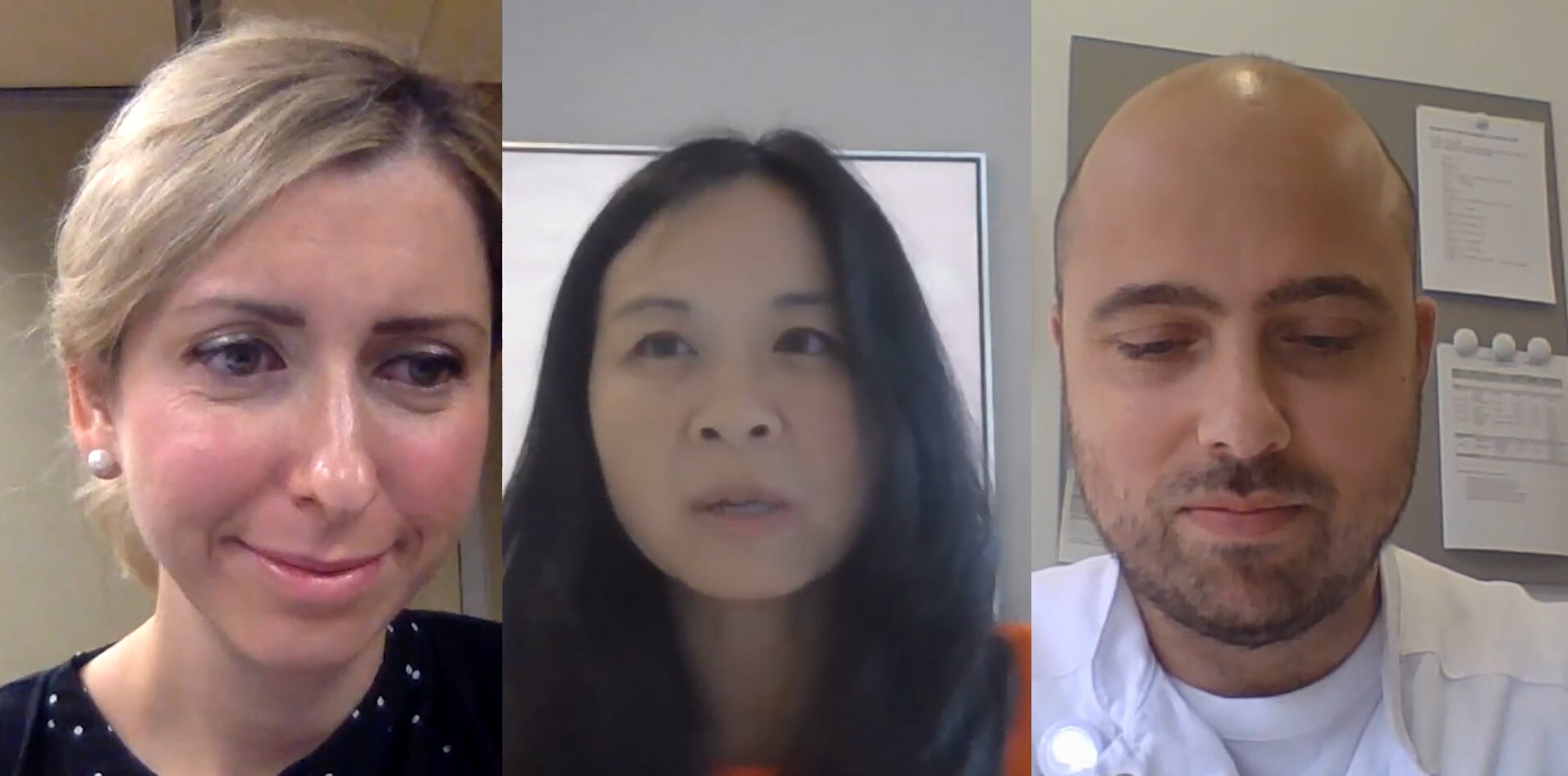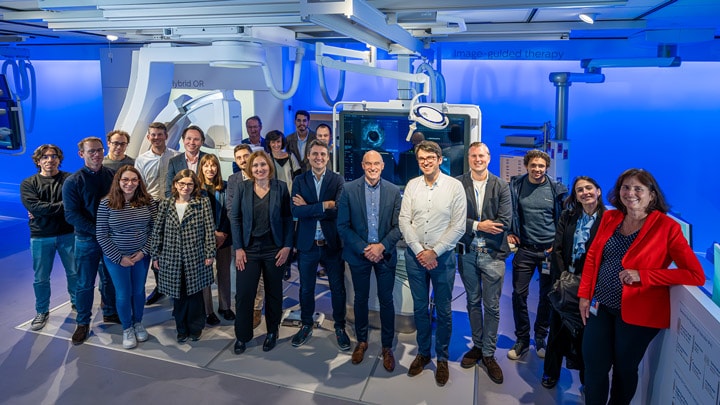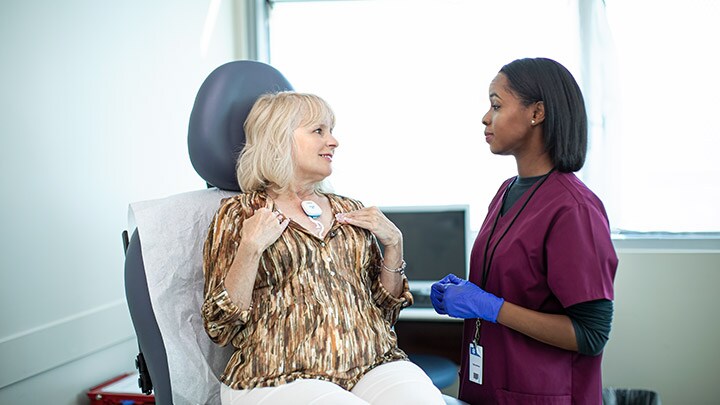Philips’ purpose is to improve people's health and well-being through meaningful innovation. Many of those innovations are aimed at reversing the current increase in cardiovascular disease and improving the treatment and quality of life for patients who are living with CVD. We are on this journey together with leading clinical researchers and care providers around the world. To mark World Heart Day 2021 (29 September, 2021), Philips Medical Officer for Cardiology Dr. Jennifer Franke invited two leading cardiologists - Dr. Olivia Gilbert, Associate Professor of Advanced Heart Failure and Transplant Cardiologist at Wake Forest Baptist Health (Winston-Salem, U.S.), and Dr. Magnus T. Jensen, Head of the Department of Cardiology and Consultant Cardiologist at Amager og Hvidovre Hospital (Copenhagen, Denmark) and Associate Professor at the University of Copenhagen - for a discussion on cardiovascular disease. The goal of this year’s World Heart Day is ‘Harnessing the power of digital health to improve awareness, prevention and management of CVD globally.’ To address this challenge, the discussion highlighted the resurgence of cardiovascular disease, what needs to happen to reverse the trend, the role of technology in tackling the challenges, and how to build a cardiac care system that improves the quality of care and experience for both patients and professionals. Here we present these key questions and the group’s expert answers.
Q. Dr. Jennifer Franke: After a period of decline due to new treatments and greater awareness of the hazards of smoking, cardiovascular disease is on the rise again, which means we still live in a world where cardiovascular disease is the leading cause of death. So why is that happening and what’s your view on where we are today with cardiovascular disease? A. Dr. Olivia Gilbert: The issue is we know how to treat cardiovascular disease but, unfortunately, poor lifestyle choices being sedentary and consuming high-sodium processed foods dominate the picture. I think this has become even more accelerated in the COVID-19 era. Decreased physical activity and increased processed food consumption are two of the biggest battles we have to overcome when trying to reverse the trend. A. Dr. Magnus T Jensen: On the other hand, I think it's important to be optimistic. We know that inflammation plays a big role in cardiovascular disease and we're getting smarter all the time as we gain more knowledge and do more research. But the big concern now is implementation. We need to keep going and focus on lifestyle factors as well as structural changes. However, if you're already a patient, I think you should be encouraged by the fact that our treatments and our diagnostic tools are getting much better, so we can diagnose cardiovascular disease at a much earlier stage than ever before. Q. Dr. Jennifer Franke: Olivia, where do you see digital technologies connecting to patients? A. Dr. Olivia Gilbert: I think there are three major opportunities for engaging with patients digitally. First, through patient portals that allow them to access their electronic health records, answer questionnaires, and receive educational guidance. Second, through smart technology such as phones and watches. Third, through medical technologies that allow us to remotely monitor patients, such as through their cardioverter-defibrillator.
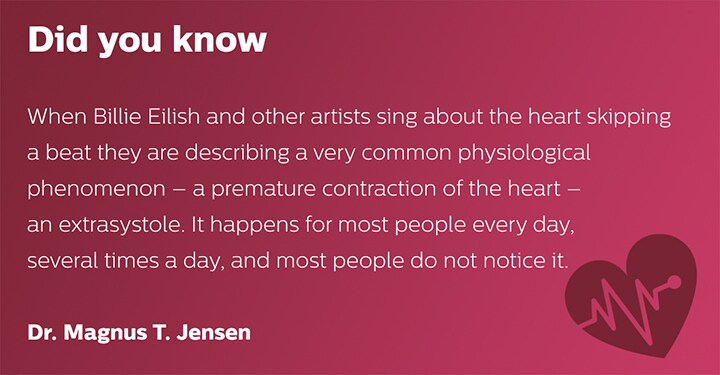
Q. Dr. Jennifer Franke: Magnus, I know you are very active in the European Society of Cardiology around e-health. Where do you see these kinds of technological innovation not only improving prevention but also the long-term management of cardiovascular disease? A. Dr. Magnus T. Jensen: Devices such as wearables and smartphones offer us an unprecedented opportunity when it comes to engaging with patients and the community. The necessary sensor technology could also be built into textiles, shoes, or hearing aids for example. So we now have the opportunity to capture physiological information on a much larger scale than before both at population scale and at the scale of a single individual. It will mean we can individualize health on a completely different level than we are used to. In terms of patient engagement and the general public’s engagement in health, it means the democratization of health is already happening. Most of us have a smartphone that can track physiological information such as heart rate, and some can even measure your ECG etc. As a result, instead of healthcare being something that happens in a hospital setting with healthcare professionals, it is already moving into the community. Q. Dr. Jennifer Franke: I guess both of you would agree that healthcare is currently very fragmented, not only in the USA but also in many European countries. What role can the technologies that you have just described play in overcoming this fragmentation in healthcare delivery? A. Dr. Magnus T. Jensen: At this point in time, we do have a concern about the social disparity in terms of healthcare delivery, because the smart devices we have been talking about are expensive. Many of the individuals at risk that we are really interested in reaching do not always have the financial resources or other personal resources to benefit from them. I think that's a challenge, but again I'm very optimistic because in the future the technology will get cheaper and cheaper and therefore more accessible. So I think digital technologies are a way of mending the gap in healthcare.
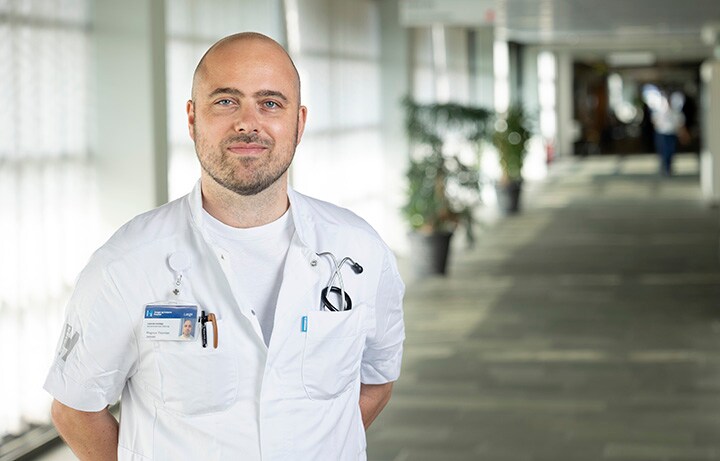
We do have a concern about the social disparity in terms of healthcare delivery, because the smart devices we have been talking about are expensive. Many of the individuals at risk we are really interested in reaching do not always have the financial resources to benefit from them.
Dr. Magnus T. Jensen
A. Dr. Olivia Gilbert: Electronic health records are a wonderful source for equalizing access to healthcare by engaging patients at a personalized level. And if they have the ability to interconnect, EMRs can also address the fragmentation of healthcare by allowing medical providers to see what's being done by other health systems. This interoperability among electronic healthcare records is also key to reducing waste and increasing efficiency. There is a big opportunity for digital health to improve care, increase efficiencies, and reduce costs. Q. Dr. Jennifer Franke: When the COVID-19 pandemic hit, a lot of non-acute care stopped or was delayed. What was your experience as clinicians and how did you adapt your patient care? A. Dr. Olivia Gilbert: As a heart failure care provider, I have different categories of patients - general heart failure patients, left ventricular assist device (LVAD) patients with a mechanical pump in their heart, and heart transplant patients. For the general heart failure patients, we were able to employ telehealth to engage them and remotely monitor cardiac devices such as defibrillator and pulmonary artery pressure monitoring implants. But with the LVAD and transplant patients, the show kind of had to go on regardless of COVID-19. So there were categories of patients for which we were able to employ different mechanisms, but there were also certain populations where we had to carry on as normal to the best of our ability. A. Dr. Magnus T. Jensen: The COVID pandemic has been a profound experience for all of us both on a professional level as well as a personal level. While we were in lockdown, we shut down most non-acute patient care. Before COVID, I don't think there was ever a time when we closed the ambulatory clinics, but now we've not only done it once, we've done it twice. It's been quite challenging not only for patients but also for the staff, doctors and management. Q. Dr. Jennifer Franke: When building a more resilient healthcare system post COVID, which adaptive measures do you think will stick and what still needs to change? A. Dr. Olivia Gilbert: I think that telehealth is here to stay, so the next step is understanding which populations will most benefit from it and in what settings. In fact, I have just submitted a grant application to study outcomes in specific cardiac populations to ascertain which circumstances telehealth works best, looking at the outcomes associated with telehealth versus non-telehealth care in specific subgroups of cardiac patients.
We know that the patients we normally follow in our ambulatory clinics, where they may not be acute, can very easily become acute patients. So you can't just shut down a cardiology clinic. You have to implement emergency procedures and clinics. The first thing we did was triage all our patients into a green, yellow or red category, with the red category being the ones we expected to become acute patients within a few days or weeks. Then we had to set up emergency clinics and put a structure in place to support them, which would have been very difficult had it not been for digital technology. We now support device integration, which means people can self-measure their blood pressure and weight, and wear a smart watch at home that transmits data via Bluetooth to their mobile phone and back to our EMR. It means that if we have another wave of COVID-19 and we need to shut down our clinics again, we will be much better equipped. And that's due to technology and innovation.
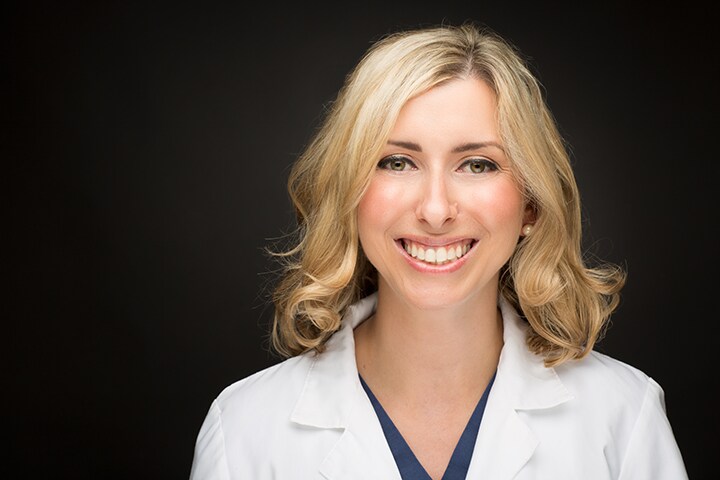
I think that telehealth is here to stay, so the next step is understanding which populations will most benefit from it and in what settings.
Dr. Olivia Gilbert
A. Dr. Magnus T. Jensen: I think there is a huge under-use of remote monitoring right now. And with the integration of devices that allow you to measure physiological parameters at home, I think our whole attitude towards what it means to be a patient will change. You can sit in the comfort of your own home and measure your vital parameters - your heart rate and blood pressure, and maybe even your blood glucose and oxygen saturation - and send the data to your healthcare provider who will probably consult with you via a video link. We are working very actively towards that, defining the necessary patient categories and doing qualitative studies to evaluate if patients enjoy this way of seeing a healthcare provider. Also from the healthcare professional perspective, how does the nurse or the doctor work with remote monitoring. I think that's very important too. Not all patients are suited for remote monitoring, but I think we will see an increase in its use, and that would be a very profound change in how we deliver care.
I think there is a huge under-use of remote monitoring right now.
Dr. Magnus T. Jensen
Q. Dr. Jennifer Franke: In this year’s Philips Future Health Index survey, around 40% of healthcare leaders stated that they are currently investing in healthcare-related artificial intelligence to improve long-term patient outcomes. What excites you most about the use of AI in cardiology? A. Dr. Olivia Gilbert: There is some controversy that AI may catch more than it should, generating too many office consultations and raising too much concern. But as we learn how to use AI to detect dangerous heart rhythms, I think it's an extremely exciting opportunity to avert and abate dangerous arrhythmias. And via wearable devices such as smart watches we can nudge people to start standing, moving and breathing more, so it’s a very exciting technology. A. Dr. Magnus T. Jensen: I also see two other big advantages of AI that will change the way we practice medicine. One is automation, especially in cardiac imaging. I think we will very soon see automated algorithms that make getting cardiac information from imaging much easier and more accessible. The other thing that is very exciting is early diagnosis and prediction from large scale data. For example, if we use deep learning and other AI methodologies to look at ECG readings from a smartphone or other sources, I think we will be able to detect subtle patterns associated with heart disease that we are not able to diagnose right now. So I think automation and early diagnosis and prediction are the big things for the future.
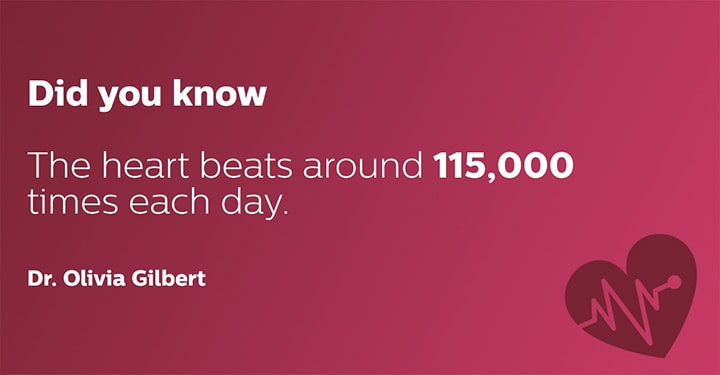
Q. Dr. Jennifer Franke: One final question, is there anything you would like to share with our audience about cardiovascular care that is especially meaningful to you? A. Dr. Olivia Gilbert: The first thing I tell my patients is ‘to move is to live’, because we know that exercise is a huge prevention strategy for cardiovascular disease. The second thing I tell them is not to ignore the silent killer of high blood pressure - hypertension - which we know represents the highest population attributable risk for the development of cardiovascular disease. And to prevent hypertension, I tell them to watch their sodium intake and consider it as a poison.
To move is to live, exercise is a huge prevention strategy for cardiovascular disease.
Dr. Olivia Gilbert
A. Dr. Magnus T. Jensen: In addition to what Olivia has just said, I would like to convey a message of hope. We are getting better at diagnosing heart disease and we essentially know what causes it. Now we just need to do it.
Share on social media
Topics
Contact
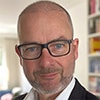
Joost Maltha
Philips Global Press Office Tel: +31 6 10 55 8116
You are about to visit a Philips global content page
Continue